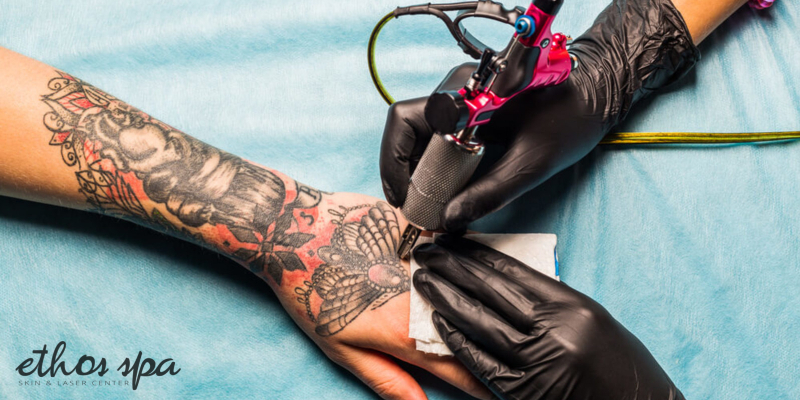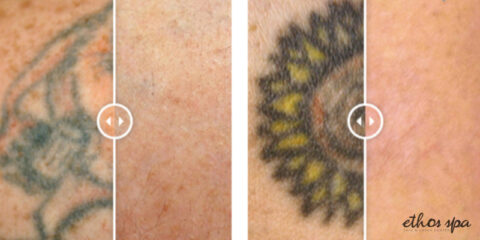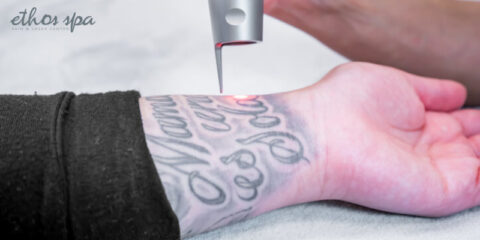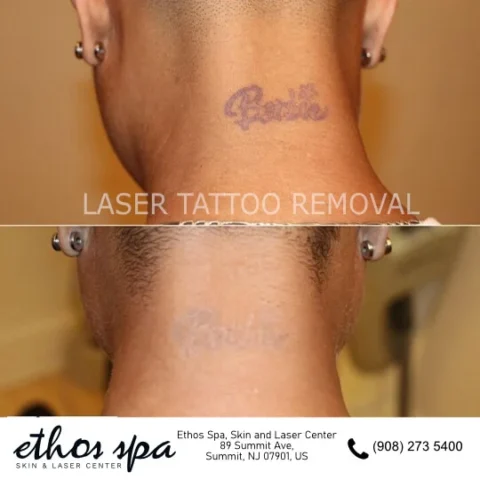Tattoos are a great way to express yourself. Aside from the endless designs to choose from, tattoos are also placed on different parts of the body. But it’s important to remember that they are a lifelong commitment which is why you should carefully consider their placement.
So what are the worst places to get a tattoo on the body? Areas like the feet, hands, stomach, chest, elbow, lips, and inner ear are not good tattoo locations. It’s essential to consider a few things when choosing a proper placement, such as pain intensity, practicality, and visibility.
7 Worst Places to Get a Tattoo on the Body
Tattoos are the oldest form of body art with the earliest examples dating back to 6000 BC. Despite the discomfort caused by the process, tattoos are still the most common form of body art until now. According to a published study by the American Academy of Pediatrics in 2010, around 38% of people aged 18 to 29 have at least one tattoo on their body.
However, it’s important to carefully consider where to place a tattoo. Some parts of the body are considered bad locations because of several reasons. Most people consider the pain intensity when getting inked, but practicality and visibility should also be taken into account – especially if you work in a place that prohibits tattoos.
Here are seven of the worst places on the body to get inked:
1. Feet
Tattoos located on the foot are always awesome to look at. However, they are likely to fade quicker because of the friction between the foot’s skin and socks or shoes. Tattoo maintenance for this area requires several touch-up sessions to keep the design clear.
Many tattoo artists find it difficult to paint a good image at the side of the foot because the thick skin in that area makes it hard for the ink to seep well. The top of the foot isn’t a good spot either because the thousands of nerve endings in that area cause sharp pain during the procedure.
Another popular tattoo spot near the foot is the ankle. Regardless of their size, ankle tattoos are bound to be painful because there isn’t much fat and flesh there. When the needle pierces the skin in the ankle area, the nerve endings in the bones pick up the vibrating sensation that causes extreme discomfort for the client.
2. Hands
Like the feet, hands are also bad spots for a tattoo. The thick skin in the palm makes it hard for the tattoo needle to penetrate deep into the skin. This area also moves a lot so the tattoo fades quickly without a frequent touch-up.
Another thing to consider when getting a hand tattoo is its visibility. Tattoos in this area are nearly impossible to cover unless you wear gloves. Tattoos are frowned upon by many employers so check the company’s policies first to confirm if visible tattoos are allowed in the workplace.
3. Stomach
Most people think that their stomach is a great place for large tattoos because of its large surface area. However, the skin in the abdomen is elastic, which allows it to stretch easily according to different factors, such as weight changes. Tattoos on the stomach aren’t recommended for female clients who have plans to get pregnant soon. Since the abdomen stretches during pregnancy, it distorts the image of the tattoo.
4. Chest
Like the abdomen, a chest is also an attractive place for a large tattoo. However, getting inked in the chest requires several sessions depending on the size of the tattoo and the artist’s patience. Unless there is enough fat in the chest area, clients are bound to experience sharp pain and severe discomfort once the needle starts piercing the skin.
5. Elbow
The skin on the elbows and knees are close to the bone which is why they’re bad locations for a tattoo. The vibrations from the tattoo tattooing device used over the bone cause sharp pains. The elbow is also frequently creased and stretched which distorts the image of the tattoo. These movements also cause the tattoo on the elbow to fade sooner.
6. Inner Ear
Tattoos in the inner part of the ear look cool for most people, but it’s actually one of the worst places to get one. Aside from the extreme pain experienced, the skin in this area also can’t handle ink well. It needs regular touch-ups from the same tattoo artist to last for several years.
7. Lips
Lips tattoos are only recommended for people who want to get permanent makeup. The skin on the lip area is thin and has over a million nerve endings. This means that getting a lip tattoo is definitely painful compared to other areas of the body. This area is also prone to bleeding, bruising, and swelling after the procedure.
Lip tattoos are also likely to fade quicker since the mouth is always in contact with saliva, food, and drinks. If you want the lip tattoo to last longer, you might need frequent touch-up sessions at the tattoo shop.
Why is Tattoo Placement Important?
Tattoo placement is one of the most important considerations for people who want to get inked. The location says a lot about an individual’s personality. It also determines how well the tattoo design turns out and how long it stays on the skin before fading.
Here are some of the most important considerations when choosing a location for the tattoo:
Pain Intensity
Different parts of the body experience different levels of pain. Locations like the lips, hands, foot, and groin area experience more pain because they have more nerve endings. Areas with thin skin and near the bone also feel more pain than fleshy parts of the body.
Since tattoos are usually drawn on the skin without anesthesia, clients must find a good body part with fewer nerve endings for their tattoo. This allows them to experience less pain and tolerable levels of discomfort.
Practicality
Tattoos in the areas exposed to friction and wetness are likely to fade quicker than other inked parts of the body. If you choose to get a tattoo in the areas like the lips, soles, hands, and waists, be prepared for regular touch up schedules with the tattoo artist. It’s also important to take aging into account. Avoid parts that easily sag or form wrinkles because they affect the appearance of the tattoo.
Visibility
Tattoos draw attention if they are placed in visible areas. They also highlight different physical assets of a person. If getting inked is frowned upon in the workplace, it’s better to place the tattoo in an area covered by loose clothing.
Sun exposure is also another thing to worry about when choosing a tattoo location. UV rays that are absorbed by the tattoo break down the ink on the skin. If you must be under direct sunlight with visible tattoos exposed for a long time, make sure to apply sunblock.
But more than the tattoo’s placement, it’s also crucial to choose a professional tattoo artist. The tattoo parlor must always sterilize their needles and other instruments to prevent the transmission of different health risks, such as hepatitis, HIV, and other blood-borne diseases.
Remove Unwanted Tattoos at Ethos Spa
If you want to remove an unwanted tattoo on the body, Ethos Spa offers laser tattoo removal that works on all ink colors. We utilize the PicoSure laser system that sends ultra-fast light pulses to the skin to break the tattoo pigments into tiny particles. This allows the body to naturally get rid of the tattoo pigment.
Experience safe and accurate tattoo removal here at Ethos Spa. Visit our website or email us at info@myethosspa.com to learn more about our tattoo removal services. You can also call us at (908) 628-1916 to book an appointment.







